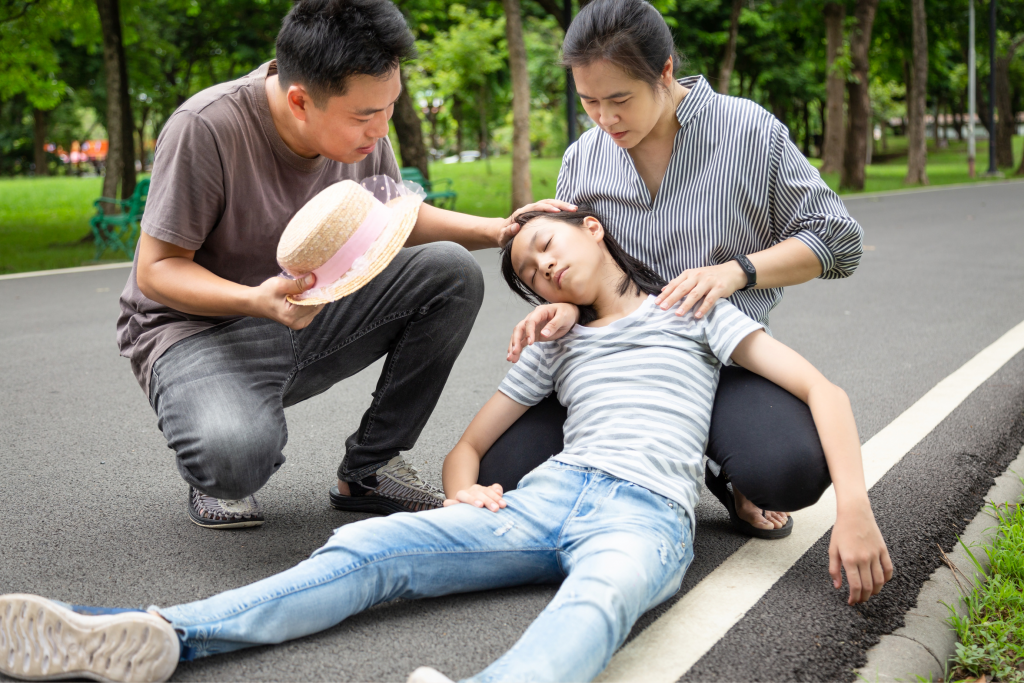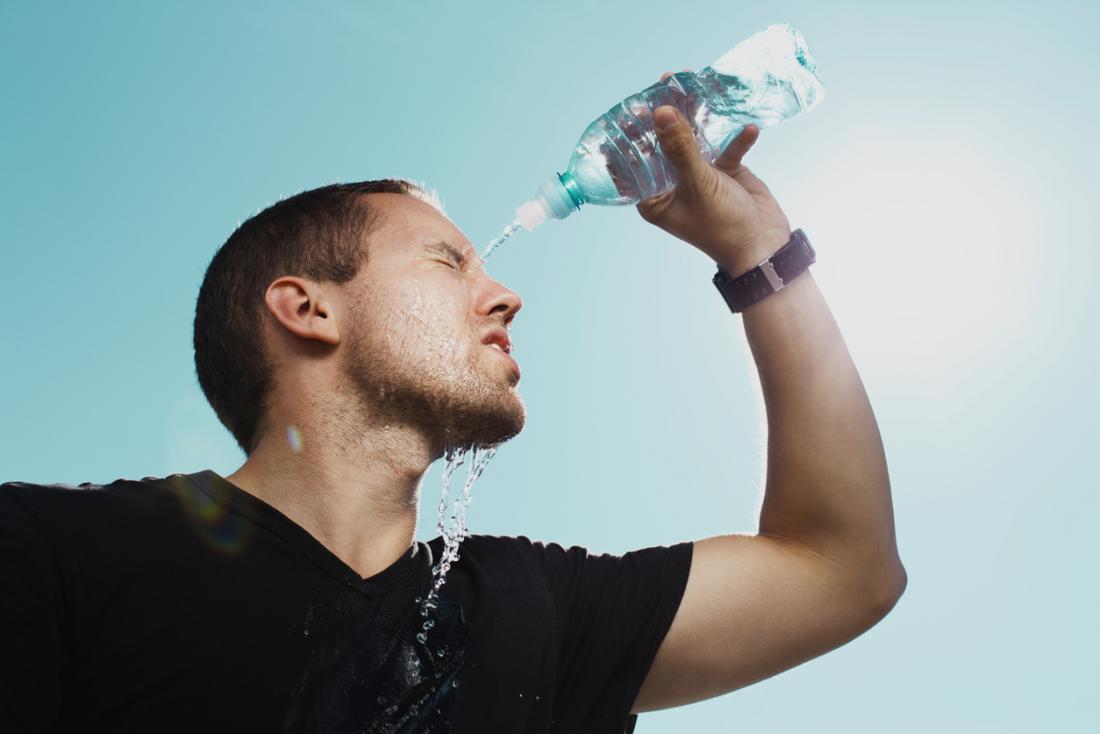Heat stroke is a severe heat-related illness that can be life-threatening if not treated promptly. It occurs when the body’s core temperature rises above 104 degrees Fahrenheit (40 degrees Celsius) due to prolonged exposure to high temperatures or strenuous physical activity in hot conditions. Heat stroke is considered a medical emergency and requires immediate medical attention. It can affect people of all ages, but certain individuals, such as the elderly, young children, those with pre-existing medical conditions, and athletes participating in intense outdoor activities, are at a higher risk. It is crucial to recognize the symptoms of heat stroke and take immediate action to cool the body down and seek medical help.
Causes of Heat Stroke
Heat stroke is a serious and life-threatening heat-related illness that occurs when the body’s cooling system fails to regulate its internal temperature in extreme heat, high humidity, or during vigorous activity in hot conditions. The primary cause of heat stroke is dehydration, which impairs the body’s ability to sweat and cool itself down effectively.
When a person becomes dehydrated, their body loses water and electrolytes essential for maintaining a stable internal temperature. Without enough fluids, the body’s ability to sweat is compromised, preventing the evaporation of sweat from the skin’s surface, which normally helps to cool the body. This can lead to a dangerous rise in internal temperature.
Several risk factors can increase a person’s susceptibility to heat stroke, including prolonged exposure to extreme heat and high humidity, engaging in strenuous physical activities in hot conditions, and certain medical conditions or medications that affect the body’s ability to regulate temperature.
It is crucial to recognize the early signs and symptoms of heat stroke, such as high body temperature, hot and dry skin, rapid heart rate, and confusion. Immediate actions should include seeking emergency medical attention, moving to a cooler environment with air conditioning if possible, and hydrating with cool water or a sports drink.
Preventing heat stroke involves staying hydrated, avoiding excessive heat exposure, wearing appropriate clothing, and taking frequent breaks in cool or shady areas. Remember, heat stroke is a serious medical emergency, and prompt and proper medical treatment is necessary to prevent complications or even death.
Factors that contribute to heat stroke.
Heat stroke is a serious heat-related illness that can have devastating consequences if not promptly addressed. Certain risk factors can increase an individual’s susceptibility to heat stroke. Age is a significant factor, with infants, children, and adults over the age of 65 being more susceptible due to their decreased ability to regulate body temperature.
Certain health conditions like heart disease, diabetes, obesity, and high blood pressure can heighten the risk of heat stroke. Additionally, individuals taking medications that affect their body’s ability to cool down, such as diuretics, sedatives, and antihistamines, may be more susceptible.
Environmental factors also play a vital role. Exposure to high temperatures, especially in combination with high humidity, can increase the risk of heat stroke. Engaging in strenuous physical activities in hot conditions, wearing excessive clothing, and lack of access to air conditioning or cool environments further contribute to the risk.
To prevent heat stroke, it is essential to take proactive measures. Staying hydrated by drinking plenty of fluids is crucial, especially in hot weather or during physical exertion. Wearing lightweight, breathable clothing and limiting outdoor activities during the hottest parts of the day can also help lower the risk. Additionally, seeking shade, using fans or air conditioning, and taking cool showers or baths can aid in maintaining a safe body temperature. It is essential to monitor vulnerable populations closely, such as the elderly, individuals with chronic health conditions, and those on certain medications, to prevent heat stroke and its potentially life-threatening consequences.
Common Indicators of Heat Stroke
Heat stroke is a severe heat-related illness that requires immediate medical attention. It occurs when the body’s core temperature rises above 104 degrees Fahrenheit, often due to prolonged exposure to high temperatures or physical exertion in hot conditions. One of the earliest signs of heat stroke is a high body temperature, accompanied by a lack of sweating. This is because the body’s cooling system fails to regulate temperature through perspiration. Other symptoms include hot, dry skin, rapid heartbeat, headache, dizziness, nausea, confusion, and even loss of consciousness. It is important to recognize these symptoms and take swift action to prevent further complications. Heat stroke is a life-threatening emergency, and prompt medical care is essential to lower the body’s temperature and prevent organ damage.

Early Signs of Heat Stroke
Heat stroke is a serious and potentially life-threatening condition that occurs when the body fails to regulate its core temperature. Recognizing the early signs of heat stroke is crucial in seeking immediate medical attention and preventing further complications.
Headache is one of the earliest and most common signs of heat stroke. Individuals may experience a severe and persistent headache, which can worsen as the condition progresses. Dizziness and lightheadedness are also alarming indicators, especially when accompanied by exposure to high temperatures.
Lack of sweating despite being in a hot environment is another significant sign of heat stroke. Sweating is the body’s natural cooling mechanism, so the absence of sweat can signify a breakdown in the heat regulation process. Muscle weakness or cramps are also prevalent in heat stroke cases and may involve the arms, legs, or abdominal muscles.
Nausea and vomiting can also be early warning signs of heat stroke. These symptoms may be accompanied by abdominal pain or discomfort. It is essential to pay attention to these indications, as they can progress rapidly and lead to more severe complications.
If you or someone around you experiences any of these signs, it is crucial to seek immediate medical attention. Heat stroke is a medical emergency that requires prompt treatment. Contact emergency medical services or visit the nearest emergency department for urgent care.
Remember, recognizing the early signs of heat stroke and seeking immediate medical attention can be life-saving. Stay vigilant during hot weather conditions and protect yourself from the risks of heat-related illnesses.
Symptoms of Severe Heat Stroke
Heat stroke is not to be taken lightly, as it can lead to serious consequences for your health. It is considered a medical emergency, as it can result in damage to the brain and other internal organs. Even if there were no previous signs of heat injury, heat stroke can occur suddenly and without warning.
One of the defining characteristics of heat stroke is a core body temperature above 104 degrees Fahrenheit (40 degrees Celsius). This elevated temperature can have detrimental effects on the body. As the condition progresses, more serious symptoms may manifest.
Seizures are one of the more serious symptoms of heat stroke. These sudden, uncontrolled movements can be alarming and indicate that the body is under extreme stress. Confusion and disorientation are also common in heat stroke cases. Individuals may have difficulty thinking clearly or remembering basic information.
In severe cases, heat stroke can lead to loss of consciousness or even coma. These are indications of severe brain dysfunction and require immediate medical attention. Internal organ damage is another concern with heat stroke. The high core body temperature can cause harm to organs such as the kidneys, liver, and heart.
Due to the potential for brain and organ damage, it is crucial to recognize and respond to the more serious symptoms of heat stroke. If you or someone around you experiences seizures, confusion, disorientation, loss of consciousness, or coma, seek emergency medical care immediately. Heat stroke is a medical emergency that requires prompt treatment to minimize the risk of long-term complications.
Immediate Solutions for Heat Stroke
When experiencing heat stroke, it is crucial to take immediate action to prevent further complications and potentially life-threatening emergencies. The first and most important step is to move to a cool, shaded area or an air-conditioned room. Remove any excess clothing to allow heat to escape from the body more easily. It is then essential to start cooling the body as quickly as possible. This can be achieved by applying cool water, preferably with the help of wet towels, or by taking a cool shower. Placing ice packs or cold packs on the neck, armpits, and groin area can also aid in lowering the body temperature. Furthermore, drinking cool fluids, such as water or sports drinks, can help rehydrate the body and regulate body temperature. However, it is important to avoid drinks with caffeine or alcohol as they can be dehydrating. While these immediate solutions can provide temporary relief, it is crucial to seek medical attention promptly to ensure proper medical treatment and to rule out any complications or underlying medical conditions. Heat stroke is a serious medical emergency, and timely intervention can make a significant difference in preventing further damage to the body.

Move to a Cool Place Immediately
When experiencing heat stroke, it is crucial to immediately move to a cool place. This immediate action helps in preventing further complications associated with heat-related illnesses and can be life-saving. Finding a cool environment is of utmost importance to regulate the body’s core temperature and alleviate the symptoms of heat stroke.
The first step is to locate shade if you are outdoors. Shielding yourself from direct sunlight can provide instant relief from the scorching heat. If shade is not readily available, it is advisable to seek refuge in an air-conditioned building. The cool air helps in reducing the body’s temperature and providing a much-needed respite from the heat.
In situations where an air-conditioned building is not accessible, finding a cool, well-ventilated area becomes crucial. This can be achieved by seeking refuge in a basement, a cellar, or any area that offers a cooler environment compared to the outside temperature. Placing wet towels on the body can also aid in cooling down.
It is essential to prioritize the immediate action of moving to a cool place as soon as heat stroke symptoms are evident. Delaying this step can exacerbate the condition and increase the risk of heat-related complications. Remember, finding a cool environment plays a significant role in the initial management of heat stroke and should not be overlooked.
Hydrate with Cold Water or Sports Drinks
Hydrating with cold water or sports drinks is crucial when experiencing heat stroke. One of the main dangers of heat stroke is dehydration, as excessive sweating can quickly deplete the body’s fluids. By drinking cold water or sports drinks, you can help prevent and treat dehydration effectively.
Drinking fluids is essential for restoring the body’s fluid levels, electrolytes, and salt balance, all of which can be disrupted during heat stroke. Cold water provides immediate relief and helps lower the body’s core temperature. Sports drinks, on the other hand, not only replenish fluids but also provide essential electrolytes that are lost through excessive sweating. They are particularly effective in maintaining electrolyte balance, crucial for optimal body function.
When it comes to infants and young children, Pedialyte is a recommended option. Pedialyte is specially formulated to replace lost electrolytes and fluids and is a safe and effective choice for preventing and treating dehydration in this age group.
Remember, hydrating with cold water or sports drinks should be done in addition to other immediate actions, such as moving to a shaded area and using wet towels to cool the body. Taking these steps promptly can help alleviate symptoms and prevent further complications during a heat stroke episode.
Loosen Clothing and Take a Cold Shower or Bath
When experiencing heat stroke, it is crucial to take immediate action to cool down the body. One simple and effective solution is to loosen clothing to allow for better airflow and ventilation. Removing excess clothing can help facilitate heat loss from the body.
Another immediate solution is to take a cold shower or bath. This helps to rapidly lower the body’s core temperature and provide relief from the symptoms of heat stroke. The cold water helps to cool down the body and reduce the risk of further complications.
Loosening clothing and taking a cold shower or bath work synergistically to bring down the body’s temperature and prevent heat-related illnesses from worsening. It is important to remember that heat stroke is a serious medical emergency and prompt action should be taken. Alongside these immediate solutions, it is recommended to seek emergency medical care for proper evaluation and treatment.
Apply Ice Packs or Cold Towels to the Skin
Applying ice packs or cold towels to the skin is an effective method of cooling down a person experiencing heat stroke. This should be done while waiting for emergency medical help, as it can help to lower the body temperature and reduce the risk of further complications.
To apply ice packs or cold towels, start by obtaining ice packs or wet towels with cold water. It is important to ensure that the ice packs are wrapped in a thin cloth or towel to prevent direct contact with the skin, which can cause frostbite. Alternatively, towels can be soaked in cold water and then wrung out to remove excess moisture.
Next, focus on applying the cold packs or towels to areas of the body with high blood flow, such as the neck, armpits, and groin. These areas have a higher concentration of blood vessels, allowing for more efficient heat transfer. Apply the packs or towels gently and leave them in place for a few minutes before reapplying. This process can be repeated as necessary to continue cooling the person down.
While applying ice packs or cold towels can provide temporary relief, it is important to remember that heat stroke is a medical emergency. Promptly seek emergency medical help for proper evaluation and treatment. These immediate solutions, along with medical care, can greatly increase the chances of a successful recovery from heat stroke.
Monitor Body Temperature and Heart Rate
When experiencing heat stroke, it is crucial to monitor body temperature and heart rate. These vital signs provide valuable information about the severity of the condition and guide immediate treatment.
Monitoring body temperature is essential because heat stroke occurs when the body’s core temperature rises above 104 degrees Fahrenheit (40 degrees Celsius). By regularly checking body temperature, you can determine if it is increasing or remaining elevated, indicating the severity of the heat stroke.
Monitoring heart rate is equally important because it can help identify the body’s response to heat stress. During heat stroke, the heart rate may become rapid or tachycardic. This increased heart rate is a sign that the body is working harder to cool itself down and may indicate worsening heat stroke.
Apart from monitoring body temperature and heart rate, some other signs and symptoms may indicate the progression of heat stroke. These can include rapid breathing, low or high blood pressure, dizziness, confusion, nausea, and even loss of consciousness. If you notice any of these symptoms, it is crucial to seek immediate medical attention as they may indicate a life-threatening emergency.
Conclusion
In conclusion, taking immediate action when experiencing heat stroke is crucial to prevent further complications and ensure prompt treatment. Delaying treatment for heat stroke can have serious risks and consequences for the individual’s health and well-being.









